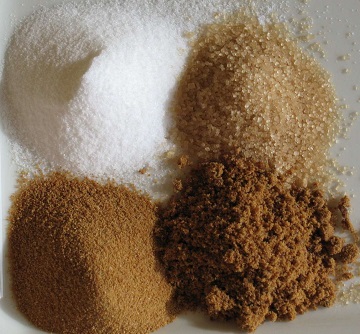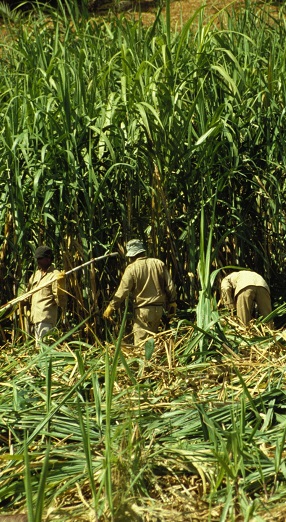|
NO HIGH FRUCTOSE CORN SYRUP FREE SUGAR WITH NO HFCS |
||
|
LIST OF HIGH FRUCTOSE FREE SUGAR
WHITE SUGARS FRUIT SUGARS NATURAL SUGARS ORGANIC SUGARS CARBON FREE SUGARS BAKERS SPECIAL SUGARS SUPERFINE, ULTRAFINE, CASTER, BAR SUGARS CONFECTIONERS OR POWDERED SUGARS ORGANIC POWDERED SUGARS COARSE SUGARS SANDING SUGARS LIGHT BROWN SUGARS ORGANIC LIGHT BROWN SUGARS DARK BROWN SUGARS TURBINADO SUGARS EVAPORATED CANE JUICES MUSCOVADO OR BARBADOS SUGARS DEMERARA SUGARS FREE-FLOWING BROWN SUGARS LIQUID SUGARS INVERT SUGARS COCONUT PALM SUGARS AGAVE SWEETENERS FLAVORED SUGARS 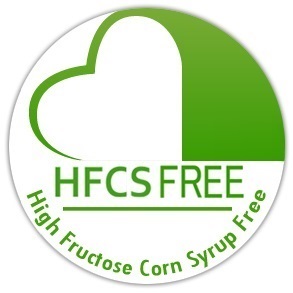
Use our list to find sugars that are high fructose corn syrup free. Be sure to confirm your selection at the market shelf as some sugars products may change their ingredients. We urge product manufacturers to adopt the use of our uniform button for placement on their sugars front labels that do not contain high fructose corn syrup but until that time confirm your selections and report any sugars that may be on our list yet may have slipped the syrup into their ingredients to us by clicking HERE to email us. Before High Fructose Corn Syrup began sneaking into food products it used to be simple. Products would proudly label themselves caffeine free, saccharin free, sugar free, gluten free, etc., yet now, the long confusing term of high fructose corn syrup has made trouble. The name high fructose corn syrup is almost as confusing as the syrup itself. When looking for a caffeine free, gluten free or sugar free product all that we need to do is look at the front label and it is typically proudly announced on the front "Caffeine Free", etcetera. We adapt to this pattern language and learn what products are without caffeine and instinctively make choices that are correct. As consumers we have never needed to refer to the item as without caffeine or no caffeine as caffeine free rolled smoothly off of our tongues and the confusion was minimized. To me it seems simple, I desire to purchase products that are High Fructose Corn Syrup free or HFCS free. I don't think to say that I desire sugars without High Fructose Corn Syrup or without HFCS, or that do not contain high fructose corn syrup, this seems to be cumbersome and confusing yet others refer to these sugars in this manner. The pattern language of food product labeling is beginning to go off path, providing further confusion. Many products proudly announced on their label that they are caffeine free, sugar free, gluten free and other natural substance free. The lack of a front label announcement for products that are high fructose corn syrup free with a standardized logo such as the HFCS FREE banner button may be due to the fact that High Fructose Corn Syrup is not natural yet is a highly processed substance. According to The Atlantic, the FDA never defining natural for processed food labeling purposes which furthers the confusion. My common sense definition eliminates does not allow high fructose corn syrup as it is a processed and is no longer a sugar of the earth. Many processed food manufactures offer several sugars within the same sugar group so making the 'does not contain HFCS' or 'no high fructose corn syrup' or 'high fructose free' announcement on one label may appear to shame their other sugar offerings that do contain high fructose corn syrup by drawing attention to them. This thought process may adversely affect their sugars that contain high fructose corn syrup. It breaks down to this, the food manufacturer's industry may be concerned that there will be a backlash against their sugars. Most sugar manufacturers do typically respond to public pressure when they see fit to prevent a backlash yet with high fructose corn syrup the manufacturers are in a position that they feel is unique and are happy with the status quo. They don't understand that many consumers only desire to be able to readily locate the high fructose corn syrup free sugar products that they desire and are not interested in shaming them for offering other products that do contain HFCS. So how do we help the manufacturers of sugars that both do and do not contain high fructose corn syrup in their ingredients feel comfortable placing a banner on the front of their sugars that do not contain the syrup? The precedence that has been set over the last 50 years in sugar labeling should be followed by referring to these sugars as being high fructose corn syrup free or for short, high fructose free, and HFCS FREE. This is sensible, will eliminate any associated label shame as it is following the pattern language of the processed food labeling industry. As consumers we are concerned with the sugars that we consume, we are not looking to start a backlash, we will leave that to the scientists and reporters on television. Our concern is to easily locate the sugars that we desire to purchase and ensure that sugar options that are high fructose corn syrup free or without high fructose corn syrup are readily available. It will not be until consumer demand prompts sugar manufacturers to provide a uniform button label on the front of their sugars in a visible placement that we see this action happen. As consumers we do not shame sugars that are not organic and do not contain the organic button yet we cherish the sugar options that are proudly labeled as organic in a readily recognizable format. To be easily informed and be able to quickly make sugar selections by finding foods that are made without high fructose corn syrup is the goal of HighFructoseFree.com and its list and upcoming search tools. The concept that the more rare a sugar is, the more value it has to it comes to mind when I search the market shelves for high fructose free sugars. Is there a mindset that consists in the food producers industry that dictates that limited offerings of sugars that do not contain high fructose corn syrup provide added value to those offerings? After all, when the list of ingredients is limited to five natural sugars the sugar easily makes it from the market shelf to my pantry without any angst over the slight increase in price over the alternative. With one limited offering I can be made very happy, especially if I do not have to spend excessive time locating it in the market. I have heard the phrases sugars that do not contain high fructose corn syrup, sugars with no high fructose corn syrup, sugars free of high fructose corn syrup, high fructose corn syrup free sugars, sugars without high fructose corn syrup, sugars without the ingredient high fructose corn syrup, sugars that do not contain high fructose corn syrup, sugars that are not made with high fructose corn syrup, sugars that are not sweetened with high fructose corn syrup and more. Additionally this is sometimes simplified by using the contraction HFCS in lieu of high fructose corn syrup. This results in a possibly simplified yet probably more complicated terminology resulting in sugars that do not contain HFCS, or sugars with no HFCS, sugars free of HFCS, HFCS free sugars, sugars without HFCS, sugars without the ingredient HFCS and more. Terms that I have heard yet are not so global are reduced HFCS or reduced high fructose corn syrup and low HFCS or low high fructose corn syrup. When a consumer sees the word NO on a label an immediate message is sent, no means no, stop, retreat, do not, etc. The word no has a stand alone meaning that no matter what the remainder of the statement is the immediate connotation is negative. I recall seeing Hunt's ketchup with a giant corn colored yellow banner across the front that read "No High Fructose Corn Syrup" in a modern green color. The word NO was underlined on the banner drawing further attention to it. I immediately wondered how this wording slipped through the quality control department? I understood that the ketchup inside of the bottle was a product that I was looking for yet the NO and the oddly colored yellow banner background lead me to select another high fructose free ketchup from the shelf. To date the yellow banner is removed from this product yet the word No is still displayed on the Hunt's label. There never was a class that taught us high fructose corn syrup terminology. In the early 1970's Pre-High Fructose Corn Syrup society sugar was the principle sugar in the American diet. With cheap subsidized corn being available sugar made from corn is now the principle sugar for processed food sugars and that sugar is High Fructose Corn Syrup. Without our knowledge it just sneaked up on us and into almost every food item imaginable. During the 1970's sugar manufacturers discovered that high fructose corn syrup was a cheap sugar that could replace natural sugar as a sugar and profits skyrocketed. Slipping the syrup into the sugars became almost seamless, possibly the switches were made in increments over time so that the difference in taste was not detected. As in the new coke, classic coke scenario, this may have not been so seamless. Today food sugars that are manufactured with HFCS are typically high calorie foods which can be sold at cheaper prices due to the abundance of subsidized corn and the resulting High Fructose Corn Syrup. The recipe was to replace expensive natural ingredients such as sugar with HFCS, the price to produce the sugar was reduced yet the market shelf price continued to increase and profits soared. So the jury is in on the proper terminology to use when requesting or discussing high fructose corn syrup. Following the pattern language of the labeling industry and calling these sugars high fructose corn syrup free should be used to prevent confusion and provide a standard for future discussions and sugar selections.
|
HIGH FRUCTOSE FREE SUGAR KNOWLEDGEBASE
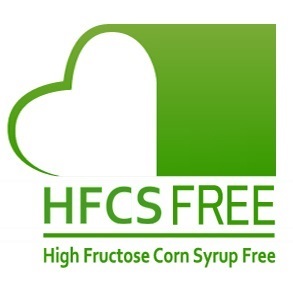
To spotlight your product or add it to our list of high fructose corn syrup free options please send a categorized, itemized list of your items that meet the requrement of being free of high fructose corn syrup. CLICK HERE FOR SPONSOR ADVERTISING RATES or HighFructoseFree.com 754 Ellwood Avenue Orlando, FL 32804 407-484-6099
|
NO HIGH FRUCTOSE SUGAR ORDER ONLINE
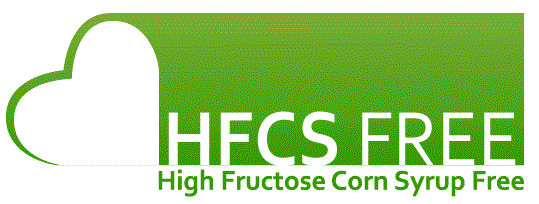 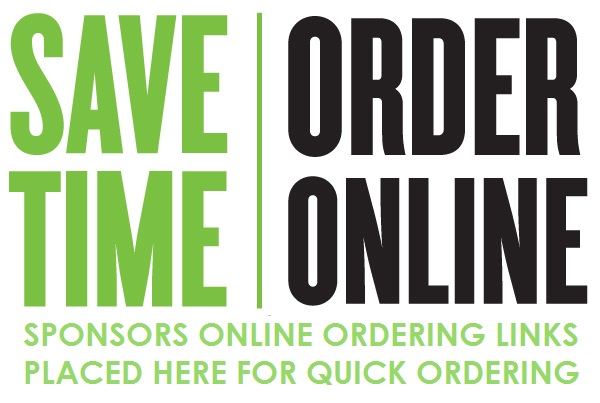
If obesity rates are skyrocketing and sugar intake is down what is making America fat. Lets all agree to let sugar off the hook on this and direct our attention where consumption intake matches the obesity rates. Now that the spotlight is on High Fructose Corn Syrup we can let sugar continue to do their thing, sweeten naturally. In the early to mid 1980's that I began to noticably gain weight. At this time I was also consuming soda pops on a regular basis and began working at McDonald's where the soda pop ran free for employees all day long. I rember this was the time that Coke introduced New Coke which resulted in a change of taste, consumer backlash, and a return to their "classic" recipe. At the time there was a conspiracy theory that this was a cover up for the change in flavor as coke was changing its sweetener in its original recipe, the coke classic recipe. This coincides with the introduction of High Fructose Corn Syrup into soda pops as it was the time that the manufacturers including Coke began using High Fructose Corn Syrup in their recipes instead of natural sugar as a sweetener. It was in this sime time frame that portion control became an issue for me partially because of the free flowing fountian at my employers but there was more to it than that. I thought my thirst needed quenching, working in a hot restaurant for long shifts lead me to believe I had hydration issues. I recall that instead of being satisfied with one twelve ounce soda pop that was naturally sweetened with sugar, I was never satisfied and became to crave more and more of the soda's sweetened with HFCS. My thirst would be quenched if I chose water, tea or another beverage that was sweetened with sugar yet it was never satisfied when I choose a soda. After leaving McDonald's and its free flowing soda fountain I began to very slowly loose the weight that I had gained from the free flowing High Fructose Corn Syrup beverages. Being a poor college student and working two jobs I was always on the run and ate alot of fast food. Affordability became my issue and with two litre bottles of High Fructose Soda Pops being quite inexpenisve I still was a consumer. My weight stabilized for the most part yet I remaind obese as I still was a consumer of the syrup. Upon graduating from college and entering the professional world I began to put on weight as I was able to more easiliy afford larger quantities of soda. I was not consuming soda that was made with real sugar yet was selecting sodas based upon the brand addiction that I had set during my years at McDonald's. This condinued for many years until I began paying attention to my health, my weight and the prodcuts that I was consuming that contributed to maintaing the excess weight that I had packed on during my years of High Fructose Corn Syrup sweetened soda pops. I was able to break my addiction to soda pops quite easily as I didn't have to read the labels, I knew it was there, the industry had converted away from processes using real sugar. I was quite aware of the sodas being sweetened with High Fructose Corn Syrup so I simply gave up sodas and made other beverage selections at the market. Breaking my addiction to soda took about two weeks and I was soda free. On a few occasions I have consumed a soda made with High Fructose Corn Syrup, typically this has been when at an office or event where the only option is canned or bottled soda without water being provided. As personal health awareness increases consumers should be sure to read your soda lable to ensure that is is not sweetened with high fructose corn syrup and uses natural cane sugar or another natural sweetenter. As the debates and scientific studies of High Fructose Corn Syrup will undoubtedly continue well into the future, it may be best to stick to natural sweeteners until more is known. It will be much easier to sleep at night knowing that your consuming foods that are made of natural sugar rather than created in a laboratory. Selecting products that are sweetened with 100% natural sugar and avoiding those that are sweetened with high fructose corn syrup can be a daunting task. The labels are typically printed in a font size that is readable only by those with 20/20 vision. Taking a magnifying glass to the market with you might be a novel alternative yet online research using the highfructosefree.com lists will be much more efficient. These days HFCS is the added sweetener in about half of the U.S. diet. Reading labels can be time consuming, product is not placed on market shelves in an order that makes any sense to the consumer yet is placed by manufacturer's jockeying for most visible space. Doing your due dlilgence to research products prior to making your market selections is made easier with the tools and list provided by HighFructoseFree.com. Each item in our list is clickable to the manufacturers page where you can read their full list of ingredients, nutritional facts and other information about the product and its manufacturer. Being able to visually recognize your product on the shelves in your market will help make your marketing trips more efficient though the use of our list and tools.
Click here to go back to HighFructoseFree.com
|
